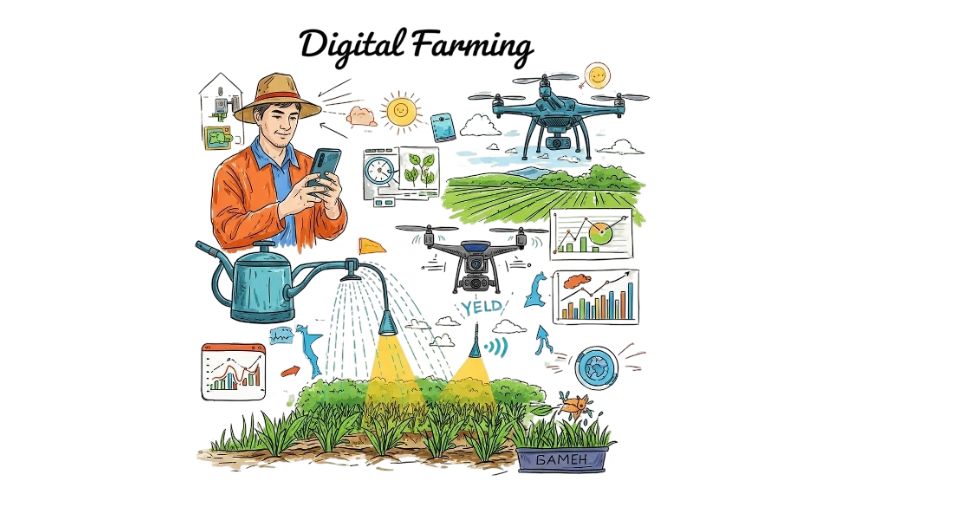
Jul 15, 2025

The newly released Global Digital Farming Market Report by Metastat Insight illuminates an high-tech globe where small steps are being taken and quietly made along the way in terms of farming practices. The report lays out in detail the transformations taking place across the farming sectors of the world, where practices long practiced are quietly being replaced with digitally enhanced processes. The progress of technology in farming has not been a revolutionary upturn but a measured process arrived at out of necessity and enabled by innovation. As farms and agribusinesses introduce technology interventions, a new world is sketched one in which computer networks are not an afterthought but are integral to productivity, sustainability, and efficiency. Agriculture, once so much reliant on hands and instinctive wisdom passed from generation to generation, increasingly becomes dependent now on precision data, automation, and networked devices. The Metastat Insight Global Digital Farming Market Report illustrates this shift as more than one of tools; it is a more radical shift of mindset between those who till the land and those who assist them.
The modern farm landscape today is now combined with advanced software, predictive analysis, and real-time monitoring systems. All these are combined to keep uncertainties to a minimum so decisions can be based on insight and not assumptions. This shift to data-driven cultivation has been slow but substantial, changing the way farmers coexist with their land and means. What is most striking here is the way this change seamlessly becomes integrated into the day-to-day activity of farm operations. Farm digital solutions are no longer futuristic niceties but necessary facts. From monitoring soil health to forecast weather impacts with high accuracy, these technologies bring an element of assurance that older practices could hardly provide.
The report identifies how these technological developments are embedded in supply chains, day-to-day operations, and even in budgeting, creating an integrated ecosystem that services the whole farming process from planting to harvesting and then on. Continent to continent, the shift to digital farming is an acknowledgment of the issues facing food production everywhere. Climate uncertainty, soil erosion, and resource scarcity have pushed more strategic and responsive agricultural practices. The Metastat Insight Global Digital Farming Market Report demonstrates how technology presents a solution to such challenges. By putting together sensors, automation, and data management platforms, farmers can make better informed decisions that enhance both yield and sustainability.
The solutions provide precise resource targeting, saving waste and environmental impact at a retained, or even improved, productivity. One point highlighted in the report is the cultural nature of this transformation. Digital farm practices and adoption levels are significantly uneven across regions depending on elements such as government policies, economic levels, and education campaigns. Where knowledge sharing is rampant and support systems are robust, digital farming practices are readily embraced. This is a difference compared to areas where technology adoption is hampered by infrastructural or economic limitations. Yet even where this is the case, there exists latent want and gradual drift toward more sophisticated farming practices.
The report draws a picture of a world where direction is clear, though speed differs. In addition, the trend of digital farming is driven by collaboration across industries. Technology providers, farming experts, policy makers, and farmers themselves all contribute to a shared ecosystem that has free movement of knowledge and innovation. Their collective work has produced resources and systems that become increasingly responsive to the particular conditions of diverse agricultural environments. Rather than imposing one-size-fits-all technologies, technology is being tailored to adapt to different landscapes, crops, and operation scale. Such adaptability ensures there is greater trust in digital systems by farmers. Beyond farm gates, spillover effects of digital agriculture extend to economy and society in general.
Supply chains are made more transparent, traceability enhanced, and food security challenges eased through enhanced forecasting of production. Banks are also realizing the value of evidence-based agricultural practices, with credit scores and insurance products becoming more responsive to technological use in agriculture. These changes reflect a more robust agricultural sector, able to cope with variability and uncertainty that previously had much greater impact. Demand from consumers also stimulates this market. Increasing need for sustainably produced, traceable produce is mirrored in the potential provided by digital farming. The ability to trace the journey of produce from farm to plate no longer an amenity but a future standard in the majority of markets further propels the adoption of digital tools in agriculture. Last but not least, Metastat Insight's Global Digital Farming Market Report offers a comprehensive study of how technology is not just boosting agriculture but is indeed transforming it.
The integration of digital systems into agriculture is redefining relationships between land, resources, and the individuals who cultivate them. It is a part of a larger narrative of adaptation and progress, in which digital innovations offer efficient solutions to modern-day agrarian challenges. Continuing in this revolution marks a time when efficiency, sustainability, and innovation cease to be conflicting goals but rather integral parts of a new paradigm of agriculture.
Drop us an email at:
Call us on:
+1 214 613 5758
+91 73850 57479